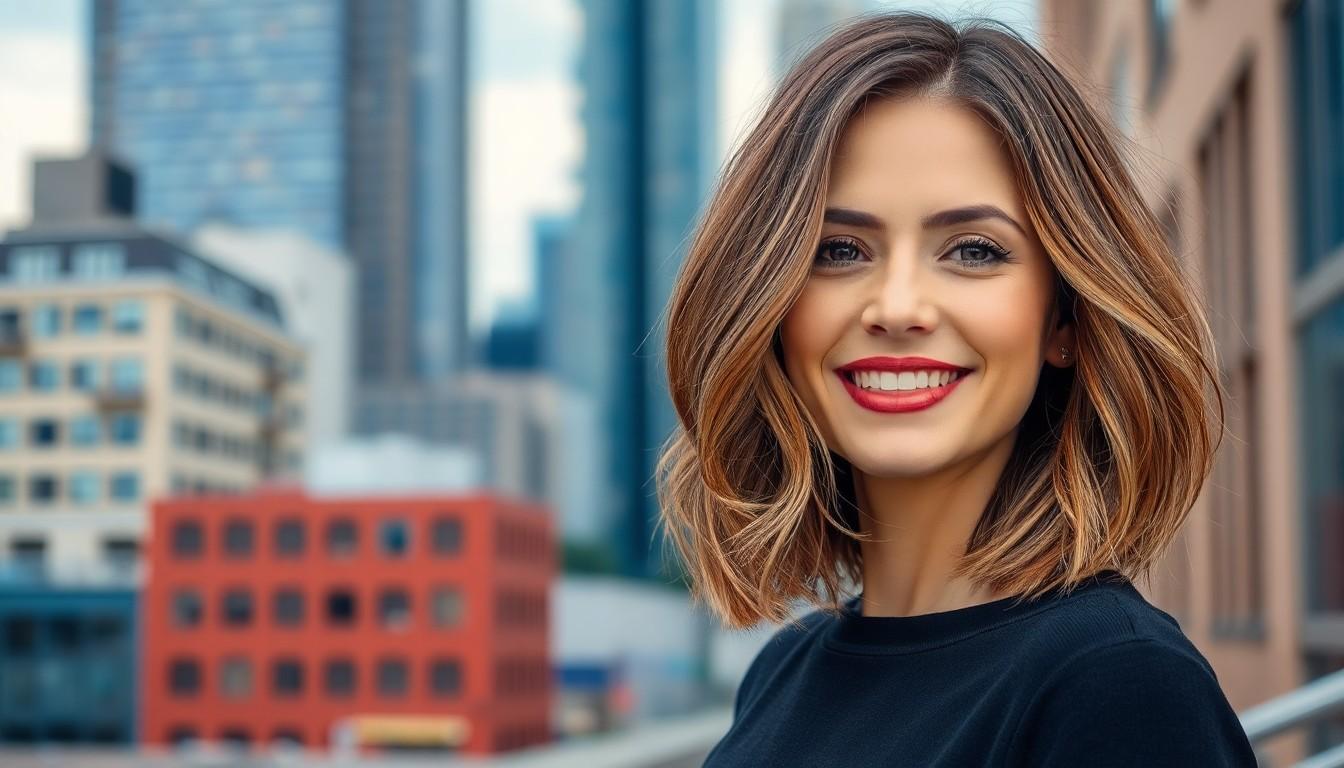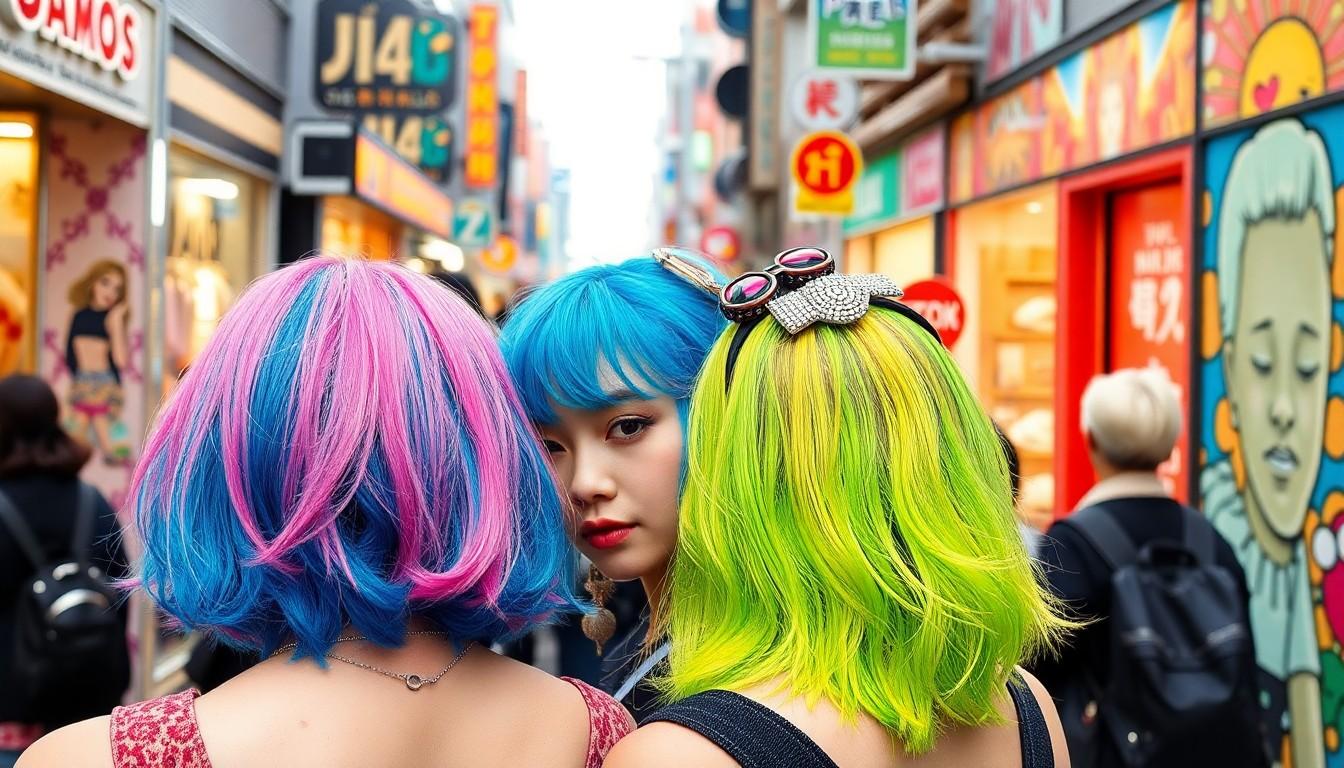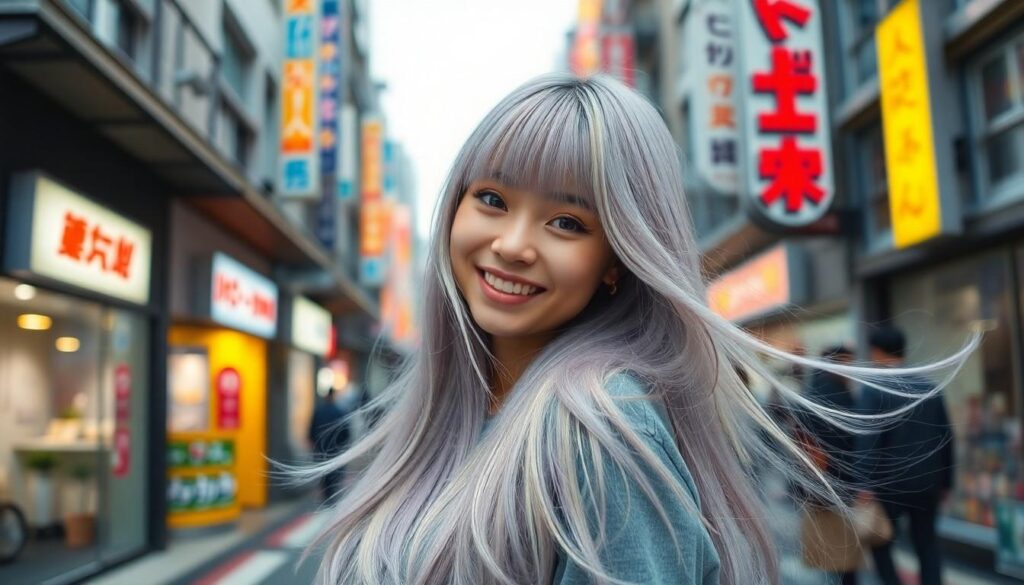Japanese hairstyles have a way of turning heads and setting trends across the globe. Whether we’re drawn to the effortless elegance of a classic bob or the bold creativity of vibrant colors and playful accessories, there’s something captivating about the way Japanese culture reinvents hair fashion.
We don’t have to travel far to find inspiration—these looks blend tradition with modern flair, making them perfect for anyone ready to refresh their style. If we’re looking for a change that feels both chic and unique, exploring Japanese hairstyles could be the perfect next step. Let’s discover how these iconic trends can transform our everyday look into something unforgettable.
Exploring Traditional Japanese Hairstyles
We see how traditional Japanese hairstyles add unmatched grace and sophistication to any look. Each style carries its own history and cultural value, letting us express elegance in everyday life.
Embracing Classic Geisha Looks
Classic Geisha looks stand out for their structured elegance. Geishas wear the “shimada” hairstyle adorned with kanzashi hair ornaments, creating a statement at first peek. We notice the hair is swept up, smoothed with wax, and pinned carefully. Bright silk ties and lacquered combs provide extra vibrancy, making this look perfect for formal events or themed photoshoots.
Understanding the Art of the Samurai Topknot
Samurai warriors popularized the topknot, known as the “chonmage.” Men back then shaved the top of their heads, gathering the remaining hair into a tight knot. We associate this unique style with power, status, and discipline. Sporting a modern version today channels confidence and celebrates these deep-rooted warrior traditions.
Appreciating the Timeless Shimada Hairstyle
Several variations of the Shimada hairstyle shape Japan’s traditional aura, with each one symbolizing different life stages and social roles. Brides, young women, and performers often choose Shimada styles, holding their hair in elaborate loops. We appreciate the way its rounded silhouette flatters facial features, making it both a historically rich and fashion-forward choice for cultural celebrations.
Adopting Modern Japanese Hairstyles for Women

Let’s jump into how we can bring fresh energy to our look using Japan’s most-loved contemporary styles. Modern Japanese hairstyles offer versatility, movement and plenty of cute, face-flattering volume.
Trying Trendy Hime Cuts
We often see the Hime cut on runways and in anime, and it’s easy to see why it stands out. Straight bangs combined with longer side locks frame our faces with sharp elegance. Many of us love how this style keeps lines precise while allowing the length to sweep gracefully down past the chin. Wearing the Hime cut can give us a bold, classic statement that looks instantly recognizable and always current.
Rocking Soft Layered Bobs
Opting for a Layered Ends Lob or a Japanese bob brings out natural movement, especially for those of us with straight, fine hair. Layers at the ends boost volume and help every strand look lively. Using a round brush as we blow-dry adds subtle bounce, while popular shades like light brown or auburn keep the look soft and lively. Whether we choose blunt ends or a softly textured edge, these bobs adapt beautifully to different outfits and occasions.
Sporting Feminine Kawaii Curls
Switching things up with curved-out or fine curved bobs brings a playful, kawaii touch to our everyday style. Flicking out the ends with a curling brush turns a basic bob into something charming and girly. When we add wispy bangs or curve the tips inward using a flat iron, the effect is gentle yet fun. Even a textured pixie cut gets cuter with a few bouncy curls or highlight streaks in brown or blonde, making every day feel a little more vibrant.
Embracing Popular Japanese Hairstyles for Men

Japanese men’s hairstyles keep evolving, blending iconic looks with easy-to-manage options. Let’s jump into three top choices that are making waves right now.
Styling with Textured Crop Cuts
We notice the Round Mash and Wave Mash taking the lead in 2024. Both styles rely on textured, face-framing layers for that soft, voluminous finish. The Round Mash features a round, mushroom-like silhouette that’s easy to style and flatters all face shapes. Meanwhile, the Wave Mash brings in smooth, wavy textures, giving a more relaxed yet stylish approach. Styling these looks usually involves light layering and, if we want waves, a simple perm works wonders for beginners.
Mastering the Two-Block Haircut
Although the classic Two-Block isn’t the highlight this year, the Samurai Bun offers a fresh twist on similar principles. This modern bun style pulls hair into a clean top knot, often paired with shaved or closely trimmed sides for a crisp look. Many of us appreciate how the Samurai Bun blends heritage with a sharp, fashionable edge. It’s a perfect choice when we want something bold that’s rooted in Japanese tradition but fits modern tastes.
Experimenting With Loose Permed Waves
Permed styles like the Wave Mash show how easy it’s become to add movement without volume. Strong, soft waves frame the face, giving a fresh vibe that’s especially welcoming to first-timers. We love that a loose perm cuts down daily styling time and keeps things looking natural and laid back. Trying out these waves gives us an effortless, textured style that’s both fun and on-trend.
Showcasing Iconic Japanese Street Fashion Hairstyles

Japanese street style never fails to surprise us with its fearless approach to hair. Every trend draws inspiration from both history and the vibrant pulse of Tokyo’s youth culture.
Channeling Harajuku-Inspired Colors and Patterns
We see Harajuku influence everywhere in Japanese street fashion, especially in bold hair color choices. Pink, blue, purple, and green shades instantly grab attention on Takeshita Street. Anime fans and fashion lovers embrace full-head dyes, while others go with dramatic highlights for a splash of color. Patterns such as stripes and ombré aren’t rare either; some even paint motifs directly onto their hair. Studio stylists in Harajuku district set these trends, helping anyone achieve that trendsetting style.
Getting Creative With Shaggy Layers and Accessories
Shaggy layered cuts bring relaxed energy to the scene. Many of us opt for layered styles, from subtle volume to deliberately uneven, choppy ends. These cuts don’t just add texture—they also make each look more ever-changing and playful. Colorful hairpins, sparkling clips, and chunky headbands often finish these styles, making the entire outfit pop. Fans of Japanese street fashion mix accessories to match their mood or event, keeping the look fresh and personal. Hats and statement hairpieces are common choices, and some even go for themed pieces to match seasonal trends.
Maintaining and Styling Japanese Hairstyles at Home

Keeping our Japanese hairstyles looking fresh at home isn’t hard if we focus on the right products and smart techniques. We can make any traditional or modern cut last longer and look better focusing to the basics.
Using Appropriate Hair Tools and Products
Japanese hairstyles truly shine when we pick the right tools and products. We should stick to moisture-rich shampoos and conditioners like Tsubaki Premium Moist Repair Shampoo and Conditioner, which keep our hair silky and manageable. On days when we need extra hydration, a nourishing Tsubaki Hair Mask works wonders—it restores shine while deeply repairing dryness. For straight styles or heat styling, we always use heat protection sprays because they help eliminate frizz and prevent split ends. Styling finishes matter, too. Using Fino Hair Oil adds softness and locks in moisture, especially for layered hair or dramatic styles like the Magic Straight Perm. If we want control for sleek looks or loose, tousled movement, we reach for a Matomage Hair Styling Stick or Japanese hair wax. These products give structure without sacrificing a natural vibe.
Practicing Proper Hair Care Techniques
Consistency is key when it comes to hair care. We make a habit of washing with moisturizing shampoos, always following up with conditioner to hydrate from roots to ends. Our routine includes using hair masks at least once a week—this step keeps our strands healthy and guards against the dryness that can dull the look of minimalist Japanese cuts. We avoid daily heat styling, letting our hair air dry whenever possible, which our minimalist-inspired styles appreciate. Twisting and tying our hair gently, instead of pulling hard or using tight elastics, helps prevent breakage and maintains the hair’s natural integrity. If we do use heat tools, applying a protective product beforehand is our non-negotiable step to lock in strength and shine. This way, our hair stays resilient, flexible, and always ready to reflect that effortless Japanese aesthetic.
Conclusion
Japanese hairstyles offer us endless inspiration whether we’re drawn to timeless tradition or bold innovation. By exploring these styles we open ourselves up to new ways of expressing our personality and creativity.
Let’s not be afraid to experiment with fresh looks or incorporate unique elements into our daily routine. With the right care and a little confidence we can easily make any Japanese hairstyle our own and turn heads wherever we go.
Frequently Asked Questions
What makes Japanese hairstyles unique?
Japanese hairstyles stand out for their blend of tradition and modern trends. They often combine structured elegance with playful, trendy elements, allowing for both classic and creative looks that suit various personalities and occasions.
Which traditional Japanese hairstyles are still popular today?
Traditional styles like the Geisha’s shimada bun and the samurai’s chonmage topknot remain iconic. These styles are often seen at formal events, festivals, and in cultural performances, representing grace and historical significance.
What are some trendy modern Japanese hairstyles for women?
Popular modern styles include the Hime cut with its straight bangs, layered bobs for added volume and movement, and kawaii curls for a youthful, playful touch. These are versatile options perfect for everyday wear or special occasions.
What are the top Japanese hairstyles for men in 2024?
For men, the Round Mash and Wave Mash are trending, both featuring textured layers for a stylish look. Another top choice is the Samurai Bun, a modern take on the classic Two-Block haircut, offering a unique blend of tradition and fashion.
How can I recreate Japanese street fashion hairstyles?
To achieve Japanese street fashion looks, experiment with bold hair colors like pink or blue, playful highlights, shaggy layered cuts, and quirky accessories such as colorful pins and clips. Embrace creativity and personalize your style for maximum impact.
What hair care tips are recommended for maintaining Japanese hairstyles?
Use moisture-rich shampoos and conditioners, like Tsubaki Premium Moist Repair, to keep hair healthy. Incorporate weekly hair masks and apply heat protectant sprays before styling. Consistent washing and minimal heat exposure also help maintain a vibrant, effortless look.
Are Japanese hairstyles suitable for all hair types?
Yes, Japanese hairstyles are versatile and can be adapted for straight, wavy, or curly hair. With the right cut and styling products, anyone can enjoy these chic looks regardless of their natural hair texture.







